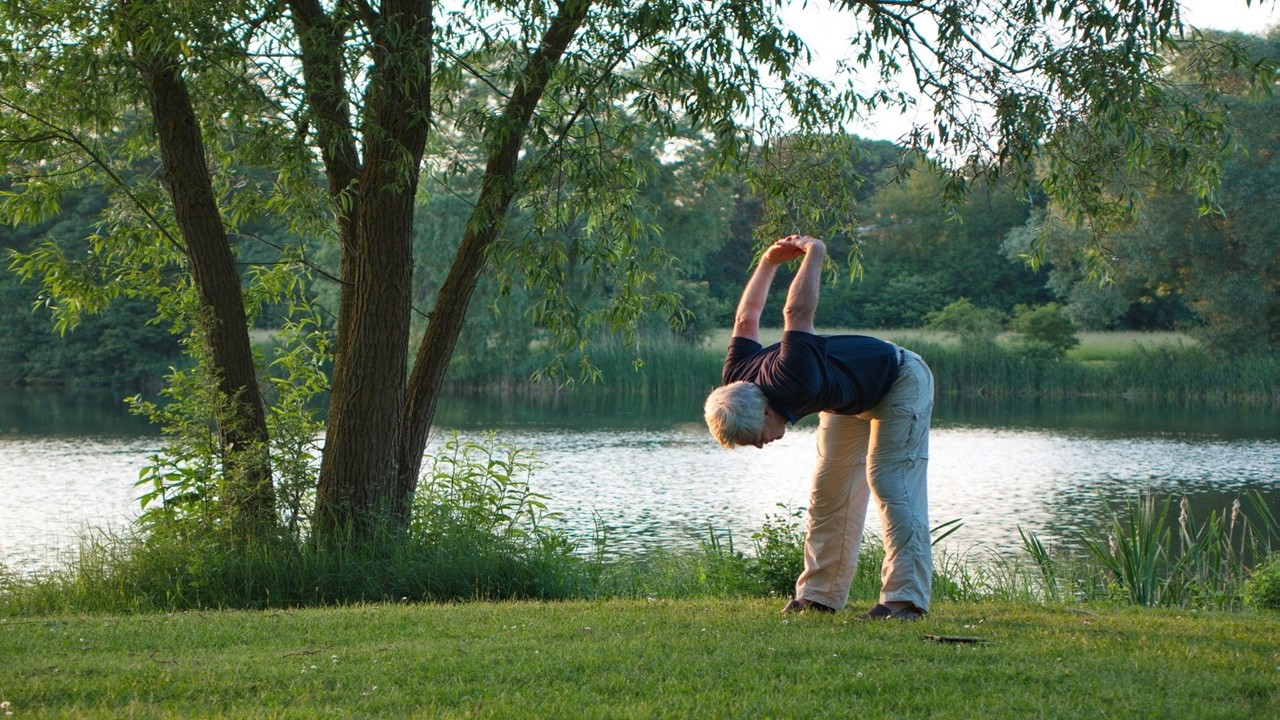Dwikonasana is a modern intermediate level standing yoga posture that improves the flexibility of the shoulder joints. We could not find any mention in the medieval yoga text.
Dwikonasana Information
| Pose Name | Dwikonasana |
| Sanskrit Name | द्विकोणासन |
| IAST | dvikoṇāsana |
| English Name | Two Triangle Pose Dual Angle Pose |
| Origin | Modern |
| Level | Intermediate |
| Group | Koansana |
| Type | Standing Shoulder Stretch |
Dwikonasana Meaning
द्वि (Dwi) means dual. It comes from the Sanskrit root द्व (dva). The European two and dva stem from the same root.
कोणा (Kona) means angle. In this context, it is a triangle. We know आसन (āsana) is a yoga position. Therefore we call this pose Dual Angled Pose or Two Angle Pose.
Now, let us see why this yoga position gets this name. In the final position of the pose, it forms two triangles. Hence this name.
Dwikonasana Procedure
Safety and Precautions
This posture is NOT meant for Pregnant ladies.
Besides, one should avoid the practice of this posture after a meal. In other words, it should always be performed in an empty stomach.
Moreover, those who are having shoulder issues should not perform this posture.
Preparatory Poses
For getting mastery, one should consider performing the following poses.
Dwikonasana Steps
Step 1
Stand erect and keep a distance of one foot in between the feet. Take a deep breath and a couple of slow normal breaths.
Step 2
Lean forward a little, stretch the arms behind the back. Interlock the fingers.
Step 3
Now exhale, bend forward from hips, and raise the arms simultaneously in a gradual manner. The torso, neck, and head should be parallel to the floor.
Step 4
This is the final position. Breathe Normally. Retain the posture as long as it is comfortable. In the final position, the arms form an angle from the shoulder joints. Similarly from the hips, another angle is formed.
Duration
The duration in the final position may be for thirty seconds to one minute for beginners. In that case, they can go for four to five rounds. On regular practice, it will be easier to be in the final position for more duration of time, say five minutes.
Advance Pose Considerations
During initial practice, the palms may be kept facing the body. Advanced students may turn the palms facing the opposite side of the body. Similarly, one may bend further towards the legs and try to place the head in between the knees.
Follow Up Poses
Since this being the forward-bending pose, the practitioner should follow up with any of the back bending poses.
Dwikonasana Benefits
The benefits of Two Angle Pose are :-
- This Posture stretches the shoulders. As a result, it improves the flexibility of the shoulder joints and strengthens the upper arms.
- It improves the flexibility of the wrist joints and finger joints. As a result, it provides the dexterity of the arms.
- This posture tones up the joints of the hips and spine. Hence it is good for back pain and sciatica.
- It stretches the muscles of the upper chest and improves the functions of the respiratory system. Regular practice is good for any branchial issue.
- Moreover, it helps to burn the belly fat and it aids in weight management.
- A medical study demonstrates that yoga postures (Postures that includes Dwikonasana) help to improve rheumatoid arthritis disease parameters.
- It is believed that it increases breast size.
